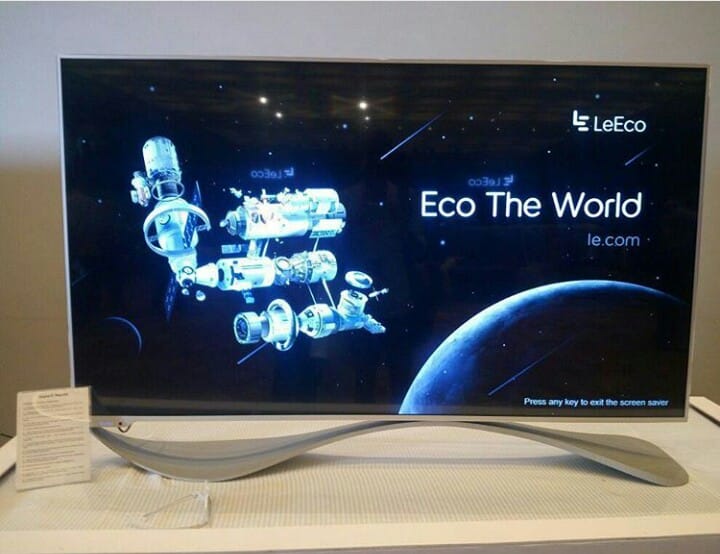In the ever-evolving digital world, engagement is king. From YouTube Shorts to TikTok tutorials, video is dominating the internet. But a new player in the content space is rising: video&A.
Video&A offers a novel, interactive method of audience engagement for creators, educators, and business owners. What video is, why it is popular, and how it can change your video communication strategy will all be covered in this essay.
Table of Contents
What Is Video&A?
Video&A (short for Video and Answers) is an innovative content format and platform where users ask and answer questions via video rather than text. It represents a shift from traditional Q&A models—creators, educators, and brands can now engage audiences through interactive, visual conversations. Video&A occurs in several forms:
Dedicated video-based Q&A platforms
Social media strategies with creators posting video responses to audience questions
Embedded interactive tools for websites and e-learning platforms
App features that merge video and community interaction
This approach stands out by blending video with audience participation, encouraging real engagement, increased watch time, and stronger creator–viewer relationships.
Why Is Video&A Important?
Interactive Experience: Viewers can participate by submitting questions, choosing video paths, or responding to polls—turning content into a two-way conversation.
Stronger Engagement: Answering real questions via video builds personal connections and enhances trust.
Higher Retention: Interactive and educational product videos keep viewers watching longer.
SEO Benefits: Video-based answers can appear in search results, increasing reach.
Humanized Support: Brands and customer support teams can deliver more personalized help using video response bots.
How Does Video&A Work?
FAQs as Short Videos: Brands create libraries of brief clips responding to common questions, useful for onboarding and customer support.
Live Video&A Sessions: Host real-time webinars where audience questions are answered on the spot.
AI-powered Video&A Tools: Use AI to generate video answers from prompts, integrating large language models to script or summarize content.
Social Media Interactivity: Invite followers to leave questions in comments; answer them in your next video—boosting follower growth and loyalty.
Embedded Video Answer Bots: Websites can install AI or creator-driven bots to address visitor queries with video responses.
The Future of Interactive Video Q&A Content
Video&A is at the frontier of the interactive video revolution. Major trends and future possibilities include:
Fully Interactive Learning Modules: Video Q&A archives searchable by topic, ideal for education and training.
AI-powered Assistants: Real-time, AI-generated video bots that answer audience queries directly.
Branching and Choose-Your-Own-Adventure Videos: Viewers make choices to shape content trajectory for personalized experiences.
Shoppable Videos: Interactive product demonstrations where viewers can purchase directly within the video.
Voice-Activated and AR/VR Integration: Next-gen formats may blend video Q&A with voice commands and immersive reality.
Personalized and Predictive Content: AI will tailor content and suggestions for individual viewers based on behavior and preferences.
How Video&A Enhances Audience Engagement Compared to Traditional Videos
Video&A (interactive Q&A video) dramatically increases audience engagement over traditional videos by making the viewer an active participant rather than a passive observer. Here’s how:
1. Active Participation
Interactive elements such as clickable choices, branching narratives, and the ability to submit questions or vote in polls turn viewers into contributors to the content.
This interactivity creates personal relevance, holding attention longer and increasing watch time versus straightforward video playback.
2. Emotional Connection & Personalization
Users feel seen and heard when their questions or choices impact the experience, deepening the emotional bond and trust with creators and brands.
Creators can tailor answers to audience queries, leading to content that feels personalized and meaningful.
3. Higher Information Retention
Engaging with content through actions—like answering quizzes or exploring alternate video paths—improves information retention over passive viewing.
Learners remember up to 95% of a message when it’s delivered interactively via video, compared to only 10% from text.
4. Extended Engagement & Loyalty
Viewers spend more time on interactive videos because the experience evolves based on their participation, reducing drop-off rates.
Repeated positive interactions foster loyalty and encourage users to return for more content.
5. Viral Potential & Social Impact
Interactive videos are highly shareable; viewers often invite friends to experience the same customized journey or discover alternate endings.
Social media platforms prioritize video (especially interactive formats), amplifying reach and engagement even further.
6. Deeper Feedback Loops
Real-time responses and analytics allow creators and brands to understand audience preferences, questions, and behaviors more deeply, enabling continuous improvement.
Brands can address actual audience concerns with personalized video answers, boosting customer satisfaction and trust.
Features of Video&A That Increase Emotional Engagement Over Traditional Videos
Video&A leverages several features that make it more emotionally engaging than passive or traditional video formats:
1. Personalization and Interactivity
Users actively participate by submitting questions, making choices, or influencing the narrative, giving them a sense of ownership and control.
Personalization ensures content feels relevant and tailored, making viewers feel “seen” and understood—a key driver of emotional connection.
2. Storytelling and Relatability
Video&A often employs real stories, relatable characters, and authentic situations. When viewers see themselves or their experiences reflected, empathy and emotional resonance increase.
This strengthens bonds because the audience is emotionally invested in outcomes or reactions.
3. Human Connection
Direct response videos, especially featuring real people (like creators, experts, or brand reps), foster face-to-face-like intimacy.
Facial expressions, tone of voice, and body language in responses are emotionally engaging, mirroring real social interactions and boosting trust.
4. Emotional Triggers
Use of music, color palettes, and sound design to set mood, amplify emotion, and reinforce narrative themes. Warm colors and uplifting music evoke positivity, while cooler tones can foster calm or trust.
Interactive elements like polls, quizzes, and branching paths keep emotional stakes high—viewers feel their choices matter.
5. Real-time Feedback and Evolution
Immediate responses to viewer queries or inputs create an ongoing dialogue, heightening emotional investment.
The experience is not static: the content adapts and evolves based on audience participation, which maintains emotional engagement longer than a fixed script.
6. Gamification and Achievement
Many Video&A platforms incorporate gamified features (challenge checkpoints, achievements, rewards) that tap into viewers’ desire for accomplishment and recognition—strong emotional drivers.
Why Brands, Creators, and Educators Should Care
As platforms like TikTok, Instagram, and YouTube enhance interactive video capabilities, Video&A is poised to transform:
Customer support (personalized video answers)
Product tutorials and demos
Audience trust and retention
Teaching complex topics in engaging ways
Video&A signals the move from passive viewing to active, personalized, and meaningful exchanges—a trend set to redefine online engagement and knowledge sharing.
How Visual and Auditory Elements in Video&A Trigger Stronger Emotions
Video&A platforms amplify emotional impact by blending carefully crafted visual and auditory cues. This multisensory approach transforms basic video into an immersive emotional experience. Here’s how these elements work together:
Visual Elements
Facial Expressions & Body Language: Seeing real human faces and body language evokes empathy and emotional resonance, mirroring real-life social interactions. These visual signals help viewers interpret feelings such as joy, sadness, or excitement instantly.
Imagery & Color: Thoughtful use of imagery (e.g., sunsets for hope, crowds for urgency) and color palettes (warm colors for positivity, cool for calm) can strongly influence mood. Color psychology is proven to evoke specific emotional responses—reds for excitement, blues for tranquility.
Dynamic Shots & Visual Motion: Movement engages attention and conveys energy, surprise, or serenity, depending on the pacing and style.
Auditory Elements
Music & Sound Effects: Music is a powerful emotional amplifier. Upbeat tracks can boost excitement, while slower melodies provoke nostalgia or calm. Strategic background music enhances emotional tone and keeps viewers emotionally connected throughout the video.
Voice & Tone: Authentic voiceovers and vocal delivery add intimacy and credibility, further deepening emotional engagement. The human voice carries emotional tone—warm, enthusiastic, or empathetic speech directly affects how a viewer feels about the content.
Sound Design: Subtle auditory cues (ambient sounds, dramatic effects) reinforce narrative moments and evoke emotion beyond what visuals alone can achieve.
The Science Behind Emotional Response
Mirror Neurons Activation: When viewers observe emotions portrayed in a video, their brain’s mirror neurons fire—allowing them to “feel” what they see, fostering empathy and connection.
Synergy Effect: The combination of sight and sound creates a richer experience, making emotions more intense and memorable than with visuals or audio alone. This multisensory integration is especially effective with dynamic, interactive Video&A content.
How can storytelling techniques amplify emotional impact in Video&A
Storytelling techniques amplify emotional impact in Video&A by creating deeper connections, evoking authentic emotions, and making the content more immersive and memorable. Here are key ways storytelling enhances emotional engagement in Video&A:
1. Relatable Characters and Authenticity
Presenting relatable, genuine characters in stories helps viewers see themselves or their experiences reflected, fostering empathy and emotional investment. Realistic dialogue, body language, and facial expressions add to this authenticity, making emotions feel credible and touching.
2. Clear Narrative Structure with Emotional Focus
A strong story with a clear beginning, middle, and resolution helps draw viewers in immediately and maintain engagement. Focused narratives that highlight specific emotions—like hope, relief, sadness, or joy—help guide the viewer’s emotional journey in a coherent way.
3. Multisensory Experience through Visual and Auditory Elements
Storytelling in Video&A uses cinematic techniques such as lighting, color palettes, camera angles, and dynamic shots combined with soundtracks and sound effects to create mood and amplify feelings. For example, soft piano music may evoke nostalgia, while warm colors induce positivity. This multisensory stimulation deepens emotional resonance.
4. Use of Personal Stories and Symbolism
Sharing authentic personal stories enables a strong emotional bond as viewers connect with real human experiences. Symbolism and metaphors in visuals add layers of meaning, conveying complex emotions subtly without needing explicit explanations.
5. Real-Time Interaction and Evolution
Video&A’s interactive format allows stories to evolve based on viewer input, which increases emotional involvement because viewers feel their participation influences the narrative outcome, generating stronger attachment and immediacy.
6. Building Tension and Resolution
Stories that include conflict or challenges build suspense and emotional tension, making viewers root for the outcome. Effective resolutions provide emotional closure that leaves a lasting impression.
7. Close-Ups and Intimate Shots
Cinematic close-ups on characters’ faces capture nuanced emotional expressions, drawing viewers closer emotionally and building a face-to-face connection.
8. Neurochemical Engagement
Beyond conscious storytelling techniques, effective narratives stimulate oxytocin release—a bonding hormone—that deepens empathy and social connection, making emotional storytelling feel personally impactful.
In summary, storytelling techniques in Video&A combine genuine human experiences, focused emotional arcs, and engaging sensory elements to create immersive, emotionally charged videos that transform passive viewers into active, emotionally connected participants. This emotional connection is key to the increased effectiveness and appeal of Video&A content compared to traditional video formats.
These insights are drawn from studies and expert analyses on emotional storytelling, video marketing, and neuroscience of engagement.
How to Use Video&A for Your Brand or Content Strategy
Here are some practical ways to use video&a effectively:
1. Answer FAQs With Short Videos
Create a library of 30–60 second videos answering common questions. Embed them on your website or post on social platforms.
2. Live Video&A Sessions
Host live sessions where you take audience questions and answer them in real time via video — ideal for product demos, expert Q&As, or webinars.
3. Use AI-Powered Video&A Tools
Several tools now allow AI-generated video answers based on prompts or questions. This blends LLM technology with human-like video content.
4. TikTok and Reels Video&A Format
Ask your audience to leave questions in the comments, then respond in your next video — a proven growth strategy for influencers and educators.
Future of Video&A
With platforms like TikTok, Instagram, and YouTube investing in interactive features, video&a is likely to evolve into:
- Fully interactive learning modules
- Searchable video Q&A archives
- AI-generated video assistants answering real-time queries
- Embedded “video answer bots” on websites
We are moving beyond text-based answers — video is the next frontier of real-time, humanized support and communication.
Conclusion: The Future of Video&A
Video&A is more than just a new content format—it represents a fundamental shift in how audiences interact with video. By merging visual storytelling, real-time engagement, and personalized question-and-answer experiences, it transforms passive viewing into active participation.












